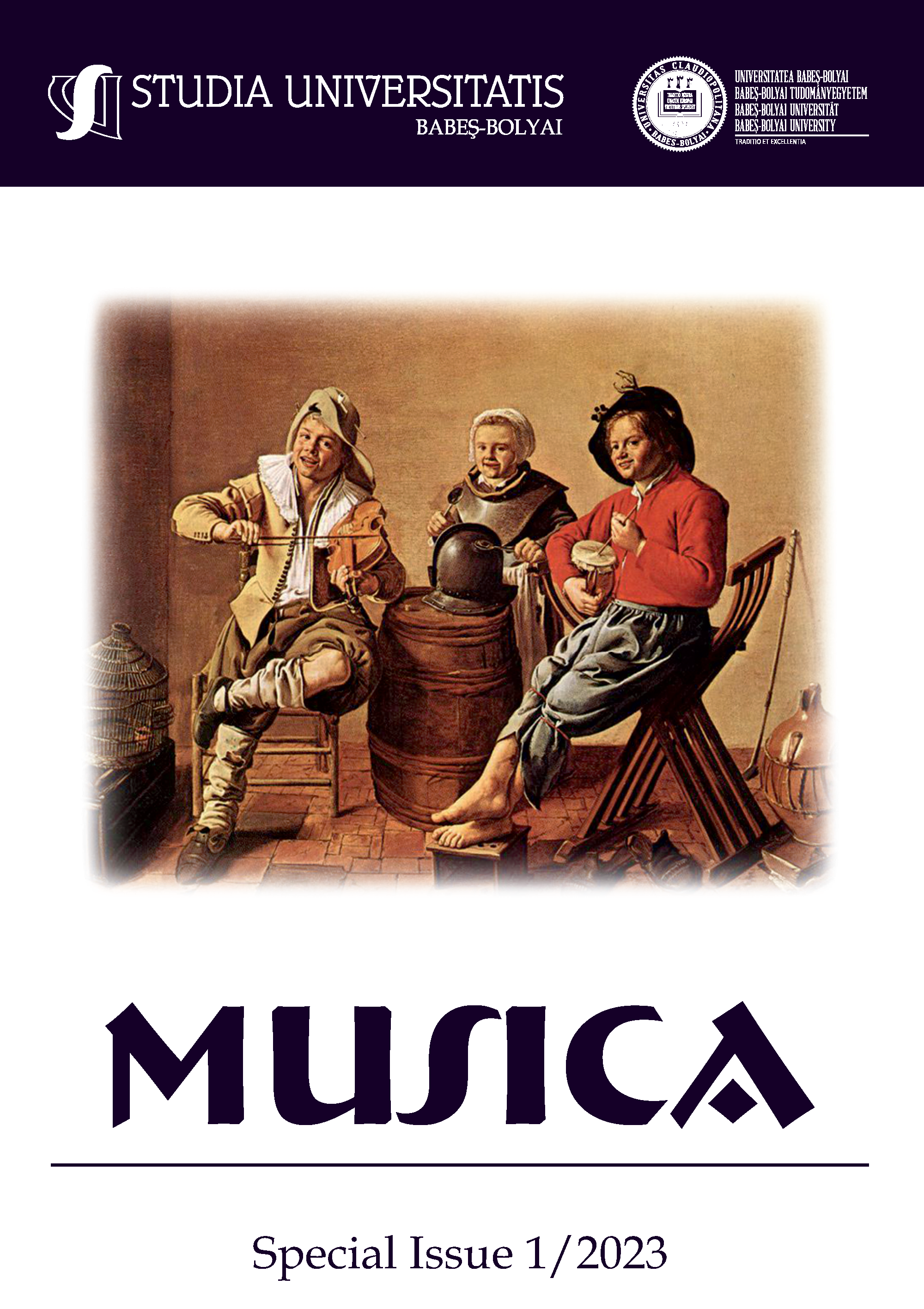THE QUESTION OF THE MUSICAL MESSAGE. THE SEMANTIC CAPACITY OF THE EXPRESSIVE STRUCTURE
DOI:
https://doi.org/10.24193/subbmusica.2023.spiss1.05Keywords:
message, communication, language, connotation, symbol, process, musicAbstract
Is it possible to communicate through music? Does music communicate something in particular? Is music like the message in a bottle – the meaning wrapped in the envelope of a form? Who would be the recipient of the musical message in this case – one, many, all of humanity, as in the IV parts of Beethoven’s Ninth Symphony? Or maybe just Captain Grant’s children? And how pertinent is the extrapolation of notional-discursive schema and logic to music as Mattheson did in Der Vollkommene Kapellmeister? Because this phrase – the message of music – immediately refers to both the suggestive neutrality of musical sounds and the emotional irrelevance of the relationships between them. Sounds are just sounds. Is a chord the analogy of the word, the melody the analogy of the phrase, and a whole articulation the substitute of a speech? Is music a language? Or, indeed, being both sonorous, but also processual and symbolic, just like spoken language, music does not connote in the same way. And if the language has prescribed references, then music does not. A chord, a melody, let alone a counterpoint, have no predetermined meaning, not even one resembling a notional one, even after the performance is over. Should the composer first be a very good connoisseur of human emotional behavior rather than a very good musician? Or, perhaps, a simple postman, as in the famous song of the Beatles?
References
Aranovski, Mark. Мышление, язык, семантика (Thinking, language, semantics), in: Проблемы музыкального мышления (Problems of musical thought), Moskva: Muzîka, 1974.
Hanslick, Eduard. О музыкально прекрасном. Опыт поверки музыкальной эстетики (On musical beautу. Еxperience of musical aesthetics), Музыкальная торговля Юргенсона, 1895.
Husar, Al., Ars longa. Probleme fundamentale ale artei (Fundamental problems of art), Ed. Univers, Bucureşti, 1980.
Langer, Susanne. Философия в новом ключе. Исследование символики разума, ритуала и искусства (Philosophy in a New Key: A Study in the Symbolism of Reason, Rite, and Art), Moskva: Respublika, 2000.
Lévy-Strauss, Cl., Mitologice I. Crud și gătit (Raw and Cooked), Ed. Babel, Bucharest, 1995.
Mazel L.A. Принцип множественного и концентрированного воздействия (Principle of multiple and concentrated influence), in: Вопросы анализа музыки. Опыт приближения теоретического музыкознания и эстетики [Problems of musical analysis. The experience of rapprochement between theoretical and aesthetic musicology] М. 1978.
*** Cioran și muzica (Cioran and music), Bucharest: Humanitas, 1996.
Downloads
Published
How to Cite
Issue
Section
License
Copyright (c) 2023 Studia Universitatis Babeș-Bolyai Musica

This work is licensed under a Creative Commons Attribution-NonCommercial-NoDerivatives 4.0 International License.






